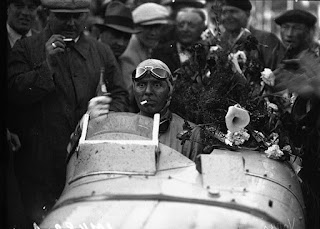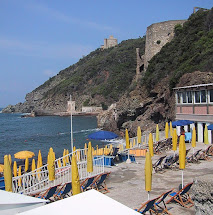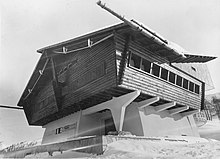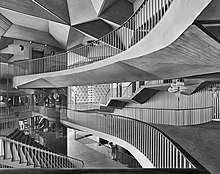The investors and aristocrats who created giant of car industry
 |
| Lorenzo Delleani's painting of the founding of Fiat shows Bricherasio in the cream jacket, with Agnelli third from the right. |
The group were brought together by Emanuele Cacherano di Bricherasio, a wealthy nobleman and entrepreneur, and his fellow entrepreneur Cesare Goria Gatti, who were founder members of the Automobile Club of Italy. The two had already enjoyed some success in the fledgling world of car manufacture as part of the Ceirano GB & C partnership the previous year and saw the potential of producing vehicles on a much bigger scale.
In addition to Bricherasio and Gatti, the nine consisted of two other nobleman, Count Roberto Biscaretti di Ruffia and the Marquis Alfonso Ferrero de Gubernatis Ventimiglia, the banker and silk industrialist Michele Ceriana Mayneri, the lawyer Carlo Racca, the landowner Lodovico Scarfiotti, the stockbroker Luigi Damevino and the wax industrialist Michele Lanza.
Giovanni Agnelli, who became known as the founder of Fiat and whose descendants ensured kept the family at the heart of the business for 115 years, was not part of the original group but after Lanza dropped out was approached by Scarfiotti, his fellow landowner, to come on board.
After a number of meetings at the Caffè Burello on Corso Vittorio Emanuele in Turin, the group secured the financial support of the Banco di Sconto e Sete of Turin and met in Palazzo Bricherasio to sign the deeds drawn up by Dr Ernesto Torretta, patrimonial notary of the Royal House of Savoy.
 |
| The first Fiat off the production line at the Corso Dante factory was the two-seater 3½ HP |
The new company’s first outlay was to pay 30,000 lire for the Ceirano business, including all its expertise and workforce. Ceirano had already produced a small car known as the Welleyes - so called because English names had commercial appeal at the time - designed by the engineer Aristide Faccioli and handcrafted by Giovanni Battista Ceirano.
The first car built by Fiat - the 3½ HP, a modest two-seater with a top speed of just 22mph (35kph) - was a copy of the Welleyes. Eight were built in total in 1899. The first factory was located on Corso Dante, in the southeast of the city, a short distance from the sweep of the Po river that gives the city a natural border. It opened in 1900, producing 24 cars, and remained the company’s production headquarters until the famous Lingotto plant went online in 1923.
Although Giovanni Agnelli quickly became the central figure of Fiat’s expansion and development, he was considered a junior member of the business at first, serving as secretary to the board.
But it soon became clear through his ideas that he had the strategic mindset required to build a profitable enterprise and his status was quickly elevated. By 1902, he was made managing director.
Fiat’s early years were not straightforward. There were various recapitalisations and changes in the composition of the share capital, but Agnelli steered the business through this period and by 1920, having become effectively the owner, he had risen to chairman.
By that time, Fiat had become the dominant player in Italy’s car industry with global expansion under way. Having become profitable by 1903, when it produced 135 cars, by 1906, that number had jumped to 1,149. It produced its first truck in 1903 and its first aircraft engine in 1908. By 1910, as Italy’s largest car manufacturer, it entered the US market with a plant in New York.
.jpg) |
| A rare picture of a young Gianni Agnelli (left) in conversation with his grandfather, Giovanni |
Control would probably have passed to Giovanni’s only son, Edoardo, but he was killed in a plane crash in 1935. In the event, Valletta became president with Giovanni’s death and remained in that role until 1966, when at the age of 83 he finally handed over to Gianni Agnelli, the founder’s grandson.
The Agnelli family's direct operational control of Fiat ended in 2004, a year after the death of Gianni. The last Agnelli to lead Fiat as CEO was Umberto Agnelli, who passed away in May 2004, although the family remains involved, through John Elkann, Gianni Agnelli’s grandson.
Elkann took on a key leadership role and stayed in a prominent management position after the 2014 merger with Chrysler created Fiat Chrysler Automobiles and Fiat as an independent family business ceased to be.
Fiat Chrysler evolved in 2021 into Stellantis, of which Elkann is chairman. Elkann is also CEO of Exor, the Agnelli family’s investment company, which owns major stakes in Stellantis as well as Ferrari, Juventus FC, and The Economist.
 |
| The company name still sits proudly above the original factory in Corso Dante, which opened in 1900 |
The original Fiat factory on Corso Dante in Turin still exists today and is open to the public as a museum, the Centro Storico Fiat, which has a large number of exhibits, including cars and aeroplanes, outlining the company’s history up to about 1970. The Fiat exhibits are part of the Museo Nazionale dell’Automobile. Tickets cost €10 for adults, with opening times from 10am until 6pm. The factory opened in 1900 and was active for 22 years before the massive Lingotto plant came into use, and became associated with the Fiat Brevetti car. The museum can be found at the junction of Corso Dante and Via Gabriele Chiabrera about 5km (3 miles) from the centre of Turin, near the southern end of the Parco del Valentino and a few streets from where the Ponte Isabella crosses the Po river.
 |
| The Palazzo Cacherano di Bicherasio, which dates back to 1636, now houses a bank |
The Palazzo Cacherano di Bricherasio, located on Via Lagrange in central Turin, between Via Giovanni Giolitti and Via Cavour, was built in 1636 as a noble residence in the Contrada dei Conciai. It became the home of the now-extinct Cacherano di Bricherasio family in 1855, known for their military honours and cultural patronage. Count Emanuele Cacherano di Bricherasio, a key figure in Italy’s early automotive industry, hosted the founding meeting of Fiat in his study, making the palace a cradle of industrial history. His sister Sofia, a painter and patron, transformed the residence into a vibrant cultural salon, welcoming artists such as Lorenzo Delleani and Arturo Toscanini. After World War Two, the palace housed a school and then an exhibition venue for the Palazzo Bricherasio Foundation, following its restoration in 1994. Since 2010, it has housed Banca Patrimoni Sella & C, preserving its architectural elegance and historical significance while remaining partially open to the public for guided visits.
Also in this day:
138: Antoninus Pius becomes Roman Emperor following the death of Hadrian
1576: The murder of noblewoman Eleonora di Garzia di Toledo, wife of Don Pietro de’ Medici
1593: The death of painter Giuseppe Arcimboldo
1934: The birth of fashion designer Giorgio Armani
.

.svg.png)






,_front_left,_at_Greenwich_2019.jpg)


_(cropped).jpg)

.jpg)
.jpg)

.jpg)
_2.95.jpg)


.JPG)
.jpg)










